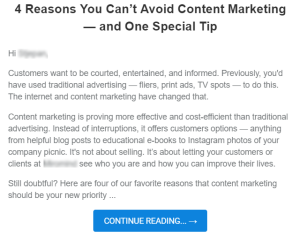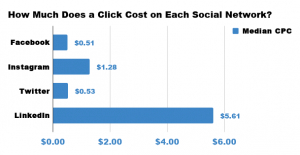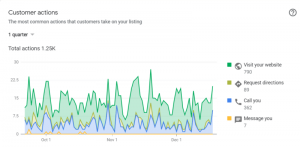
In the effort to reach their consumers, marketers and brands today have digital operations in their prime focus. But despite their best efforts, some are still not feeling the effect of their display investments, even with a strong online presence and use of latest technologies. For those who are still struggling to get the ROI of their display campaigns, here’s a short guide on how to craft a winning display strategy.
1. Set campaign goals
Successful ad campaigns rely on a sound, multi-layered strategy, and this strategy consists of precise goals that a brand aims to achieve. Whether they’ll include raising brand awareness, growing email subscribers, or increasing website, traffic, sale, or conversions, they should express your brand’s commitment to fulfilling them.
The crucial question in the process of coming up with campaign goals should sound something like this: “What do I want to achieve with my ad?”
Let’s say your brand is a watch. Do you want consumers to memorize your product as they browse other products, or you want them to click on the ad and buy the watch? If the answer is the first, you want to build brand awareness; if it’s the second, you’re looking to drive sales.
2. Reach out to your audience
Ideally, you want to create a strategy that focuses on reaching your perfect audience. Your ads won’t produce an equal impact on everyone, which is why a clearly defined targeting plan will be directed only to those that are likely to be interested in your ads. This will save your budget, time, and efforts.
Questions such as these below could help define your strategy:
- “What do we want to accomplish with this campaign?”
- “Do we want to generate broad interest within a target market?”
- “Do we want to convert people who have already shown interest in our brand?”
Here’s a brief overview of some targeting strategies:
- Location-based: An excellent strategy for local businesses or those trying to create general interest in a specific geographic area.
- Demographic-based: Targeting based on parameters that segment targeted audience into more specific groups. These parameters may include age, gender, location, etc. These traits segment targeted audiences even further, increasing the chances for engagement and conversion of your campaign.
- Retargeting: Retargeting is the means by which ads are served only to people who visited a brand’s website. Retargeting is a oriented on conversions and focused on branding, while at the same time it keeps the audience within the conversion funnel.
3. Choose the right tools for campaign execution
The success of your campaign largely depends on the tools used for its execution. This means you should research your media buying options and choose the one closest to your established goals.
There are several media buying options to choose from:
- Directly from publishers
- Using programmatic platforms
- Media agencies
- Affiliate networks
Whether you decide to buy media directly from publishers or use a platform, make sure they fit your needs and budget.
4. Create compelling banner ads
After you have your strategy set, you should make sure the banners you create will appeal to your audience. Banner design is an important factor in a display campaign strategy. After all, ads are displayed for people to see them. That’s why they have to cause engagement with potential consumers.
Keep the ad content short and simple. Consumers are already overwhelmed with content, so the aim should be able to distract them with a meaningful, short, and clear message. Simplicity is always a winner in display advertising.
However, keep in mind that banners primarily reflect the creative message of the brand, which means that spending time on crafting the entire story that the banner should tell will worth the effort.
5. Optimize your landing page
A strategy can have all the elements included, but if it fails to optimize the landing page for conversion, it might result in a complete failure. What happens after someone clicks on your ad? A potential consumer is taken to your landing page. A good landing page should have users in mind, not search engines. It’s crucial to the success of the campaign and the ad strategy. By combining creativity, clear content and a conversion point that is in line with the call-to-action in the creative message, you have a good chance of conversion and a positive ROI.
To ensure consistency and continuity of the banner and the landing page, you have to make sure that the claim/promise in the banner will immediately appear on the landing page – in this way, consumers will quickly figure out they’re on the right page. If the landing page fails to continue the message in the banner, consumers might be confused and this could cost the brand a conversion.
“Success is not final, failure is not fatal: it is the courage to continue that counts.”
Creating a display ad strategy is the first step that will help your business and will lead to developing a more focused ad campaign. A well-crafted display advertising strategy gives brands the chance to better evaluate their campaigns and improve them.
Having in mind the above key elements, the ultimate objective of display advertising is to continuously test the brand’s path to success. When the ad campaign is completed, you’ll gain insights about your audience (such as preferences, behavior, etc.), and this feedback could prove invaluable in improving future campaigns.
Digital & Social Articles on Business 2 Community(71)





